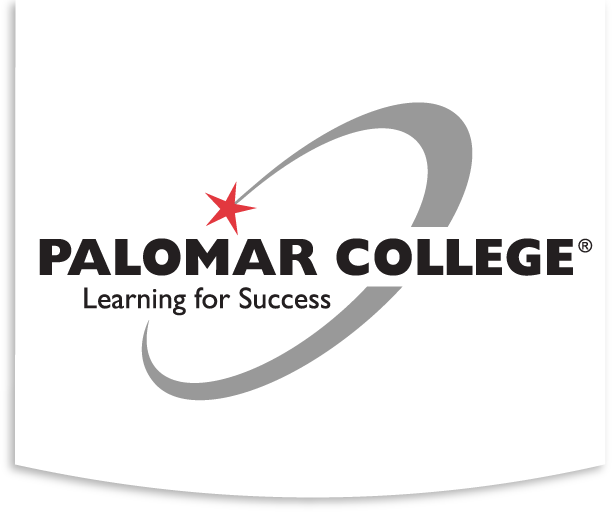
As part of its Strategic Planning process, Palomar College monitors and reviews a set of Institutional Effectiveness (IE) indicators. IR&GP tracks the institutional effectiveness metrics over time and provides an annual Institutional Effectiveness report/presentation to the College Council and the College’s Board of Trustees. This process enables the College Council to monitor and discuss the extent to which college efforts are impacting student success and enhancing organizational effectiveness. The measures also incorporate metrics such as the State’s accountability indicators and institution-set standards for accreditation.
Planning and Accountability Metrics Across the Student Journey
Institutional Metrics – Presentation May 23, 2025
Student Journey Metrics
| Student Journey | Metric | Baseline | Target | Time Frame |
|---|---|---|---|---|
| Enrollment | FTES | 14,078 | 17,950 | 2029-30 |
| Enrollment | Yield Rate | 40% | 43% | 2028-29 |
| Momentum | Needs Based Financial Aid | 36% | 38% | 2028-29 |
| Momentum | Course Success Rate | 74% | >72% | Maintain |
| Momentum | One Year Persistence | 54% | 57% | 2028-29 |
| Completion | Completion Rate | 38% | TBD | TBD |
Institution-set Standards and Stretch Goals (Accreditation Annual Reporting Year 2025)
| Institution-set Standard | Institution Stretch Goals | Actual 2021-2022 | Actual 2022-2023 | Actual 2023-2024 | Met Standard or Goal | |
| Course Success Rates | 71% | 72% | 72% | 74% | 74% | Goal |
| Count of Certificates | 2,000 | 2,300 | 2,141 | 2,098 | 2,299 | Goal |
| Count of Degrees | 2,000 | 2,300 | 2,319 | 2,128 | 2,051 | Goal |
| Transfers | 1,600 | 2,000 | 1,618 | 1,618 | 1,486 | Standard |
Licensure Pass Rates
| Licensure Pass Rates | Institution-set Standard | Institution Stretch Goals | Actual 2021-2022 | Actual 2022-2023 | Actual 2023-2024 | Met Standard or Goal |
| Nursing (National) | 85.00% | 90.00% | 86.05% | 96.00% | 98.41% | Goal |
| Registered Dental Assistant (State) | 80.00% | 90.00% | 89.00% | 100.00% | 100.00% | Goal |
| EMT (National) | 70.00% | 80.00% | 75.00% | 80.00% | 78.80% | Standard |
| Paramedic (National) | 70.00% | 100.00% | 91.00% | 88.00% | 82.00% | Standard |
Licensure Pass Rates Sources: MIS Submissions to CCCCO; California Board of Registered Nursing; Dental Board of California; California Emergency Medical Services Authority: Perkins V Core Indicator Report
Job Placement
| Job Placement | Institution-set Standard | Institution Stretch Goals | Actual 2021-2022 | Actual 2022-2023 | Actual 2023-2024 | Met Standard or Goal |
| Nursing | 72.26% | 80.00% | 91.67% | 78.95% | 92.86% | Goal |
| Registered Dental Assistant | 72.26% | 80.00% | 82.61% | 100.00% | 95.24% | Goal |
| EMT | 72.26% | 80.00% | N<10 | N<10 | — | — |
| Paramedic | 72.26% | 100.00% | 86.74% | 92.89% | 88.30% | Standard |
Job Placement Sources: MIS Submissions to CCCCO; California Board of Registered Nursing; Dental Board of California; California Emergency Medical Services Authority: Perkins V Core Indicator Report

